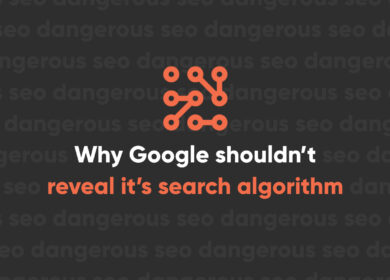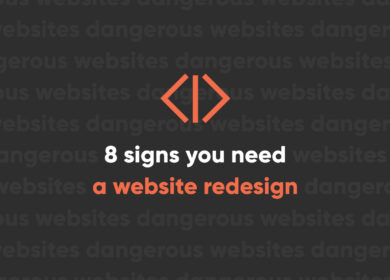
Why Aren’t People Filling Out Our Contact Forms?

You have a great product/service and a great website to showcase it, but your contact forms are sitting in a dormant state. You jump for joy when you receive a single form submission in your inbox, thinking the floodgates are about to open. Days pass. Weeks pass. Months pass. A few form submissions might trickle in here and there, but not enough to justify the website or marketing costs.
So what’s the deal? Is it you? Do people not want your services? Does the dang form even work?
Contact forms can be used for just about anything. Quote requests, appointment requests, reservations, general questions, download gateways, the list goes on. If you want people to contact you about something, there’s a form for that.
In today’s world, people are more likely to send an email or complete a contact form than they are to make a phone call. Whether it’s because of our increasingly busy lives, our decreasingly adept social skills, or something else entirely, we love contact forms. So it can be quite discouraging when yours isn’t getting used.
There are a few obvious reasons why people aren’t filling out your contact forms: the forms don’t work, your site isn’t getting any visitors, people can’t find the forms, etc. But let’s assume you aren’t having these basic problems. You’ve test your forms and they work just fine. You’re getting tons of visitors. You have great calls to action and seamless navigation. People are finding the forms. They’re just not completing them. You’re suffering from major contact form abandonment, but you can’t figure out why.
Here are some less obvious problems:
You’re asking for too much information.
How many required fields do your forms have? The more info you ask for, the less likely you are to get it. Do you really need a person’s mailing address, phone number, alternate phone number, fax number, job title, hair color, and shoe size? Try streamlining your contact form by asking only for the information you need. This means actually removing the unnecessary fields and only requiring fields that are absolutely essential. Don’t make the mistake of simply making certain fields not required. Even if only a few fields are required, a long contact form still may turn people away.
We’ve seen contact forms that are roughly a mile long. When we ask business owners what they plan to do with all that information after they receive the form submission, the answer is often "Call them for more information." If you’re going to call them anyway, then why require all of this information upfront? Get the lead, then request what you need to complete the transaction.
The purpose of the form isn’t clear.
Do your contact forms clearly indicate a purpose? Your potential customers aren’t going to fill out a form if they aren’t sure what the form is for. Example: You have "Request a Quote" buttons plastered all over your site. These buttons take your visitors to a general contact page with a form simply labeled "Contact Us." This form doesn’t meet the user’s expectation. If the purpose of the form is to request a quote, then make sure you communicate that with your users. A confused user typically does not become your customer.
The action of the form isn’t clear.
What wording does your contact form button use? It may sound petty, but words really can make a difference. People are less likely to "Submit" a form than they are to "Send" one. They’re even more likely to "Request an Appointment" or "Get a Quote." Make your contact form buttons consistent with the purpose of the form and your call to action. It’s a simple fix that can increase your total leads, so there’s no excuse to keep asking people to "submit" to you.
The form doesn’t look good.
Is your contact form styled? Does it match the look of your site? Does it play nice with any device, including mobile? If you’re using some generic template from 1998 that doesn’t seem to fit the overall feel of your website, then your visitors may be less likely to complete it. It doesn’t have to be some clever design, but at least make it look appropriate and modern.
And let’s talk about those big ugly Captchas. A Captcha might be a great way to weed out those spam form submissions, but you need to do it tastefully. Some forms use Captchas that are bigger than the entire form. If your Captcha is invasive or difficult for users to solve, then people will abandon the form.
There are too many distractions on the form page.
Is your contact form surrounded by maps, phone numbers, email addresses, pictures, and other information? If getting people to complete a contact form is one of your site’s main goals, then you need to focus on the form. Don’t bury your Request a Quote form on a general contact page. Create pages that are geared towards your forms. Getting people to fill out your forms might be as simple as getting rid of all the distractions.
Your form is too picky.
Do your form fields need everything entered in a very specific way? We’ve seen forms that require a phone number to be entered exactly like this: (555)555-5555. Wait, you put a space after the parenthesis? Nope, your form won’t be submitted. And then there’s the form that requires a name to be a certain length. What do you mean your last name only has two letters? Nope, your form won’t be submitted. Don’t force your customers to meet such strict (and pointless) standards. Just let them enter their information and send it to you. How many times do you think a potential customer will tolerate an error message before giving up on contacting you? The answer is probably even less than you think.
Conclusion
Still not sure what’s wrong with your contact forms? Try some A/B tests. Don’t just assume one thing is going to work better than another.
If you want people to use your contact forms, you need to provide the best possible user experience. Create clear and consistent expectations and make your forms simple to use. And don’t forget to follow-up with a Thank You page that lets your customer know the form has been sent and that you will respond soon.
This post is part of Internet Marketing Mysteries, a weekly column addressing actual client questions related to SEO, analytics, website best practices, and any other topic connected to internet marketing. Have a question you’d like to see tackled in a future post? Let us know in the comments.

Nate Tower
Nate Tower is the President of Perrill and has over 12 years of marketing and sales experience. During his career in digital marketing, Nate has demonstrated exceptional skills in strategic planning, creative ideation and execution. Nate's academic background includes a B.A. with a double major in English Language and Literature, Secondary Education, and a minor in Creative Writing from Washington University. He further expanded his expertise by completing the MBA Essentials program at Carlson Executive Education, University of Minnesota.
Nate holds multiple certifications from HubSpot and Google including Sales Hub Enterprise Implementation, Google Analytics for Power Users and Google Analytics 4. His unique blend of creative and analytical skills positions him as a leader in both the marketing and creative worlds. This, coupled with his passion for learning and educating, lends him the ability to make the complex accessible and the perplexing clear.
Author
Nate Tower
Date
Explore with AI
Join Our Newsletter


Why Google Shouldn’t Reveal Its Search Algorithm


8 Signs You Need a Website Redesign


